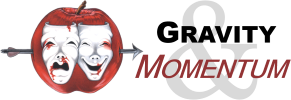Creating Blood Effects, Stage Science
Vision, Contrast, and Blood Color
One of the major components of vision perception is contrast. Contrast in the visual scene creates the base framework from which the brain builds and layers the image. This means that the higher an object’s contrast to its environment, the easier it will be able to be seen.
Many assume that the color red will attract the visual system because of its hue or some evolutionary/survival mechanism that draws our attention. The reality is that the hue of a color doesn’t have a significant effect on our visual attention and any survival mechanism would be related more toward autonomic processing rather than vision perception. Often red appears in contrast to a background with colors that are less vibrant, which is why the color “grabs” our eye. Our eye could also be just as easily attracted to a black object in a bright scene.
This means that the blood color you choose for your production should contrast with the set, costumes, and lights as much as possible to maximize the audiences attention to the effect. Even if a blood looks the most “realistic” for a scene, if it doesn’t grab the audience it will lose some of its impact.
Color isn’t the only contrast to consider. If your show has high volumes of blood for each effect, a moment where a very small amount will contrast and stand out. Thickness, delivery (spray, spurt, etc.) and time onstage can also vary to manage the story the blood effect is progressing.
Finally, you can contrast your effect with the audience’s expectations. This is an effective method for shows where there may be one, or a few small effects. Audience expectation is an extremely powerful tool to manipulate. You can either build this expectation through the narrative or you can guide the audiences’ natural inclinations. When you reach the time to deliver the effect you have the choice to validate or violate the audiences’ expectation. Doing so will always result in a reaction, the quality of which depends on the quality of the effect and its execution.
The bottom line is that however you choose to design, build, and deploy your effect, contrast is a crucial component that will go a long way to determining whether the gag will be seen and successful.
